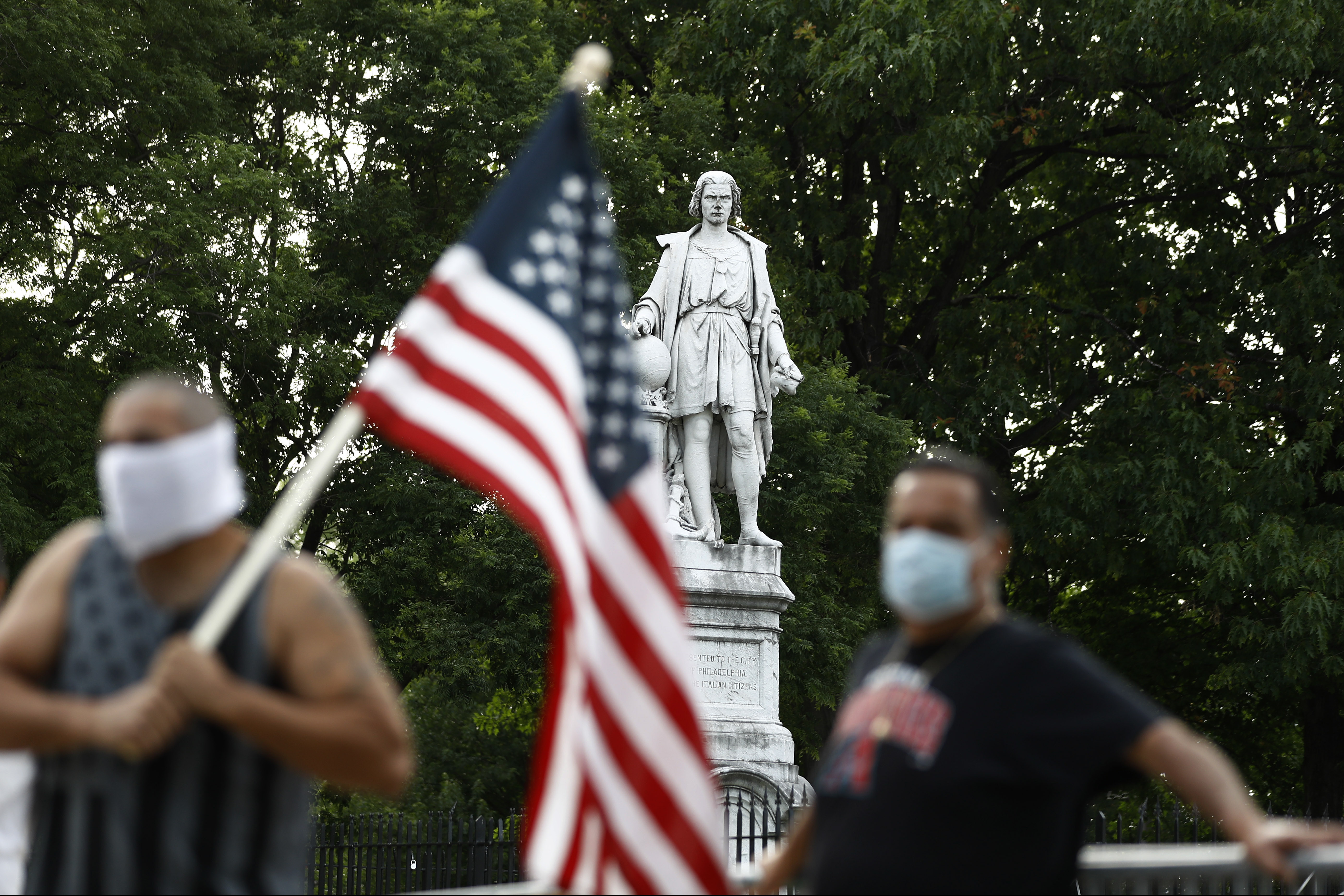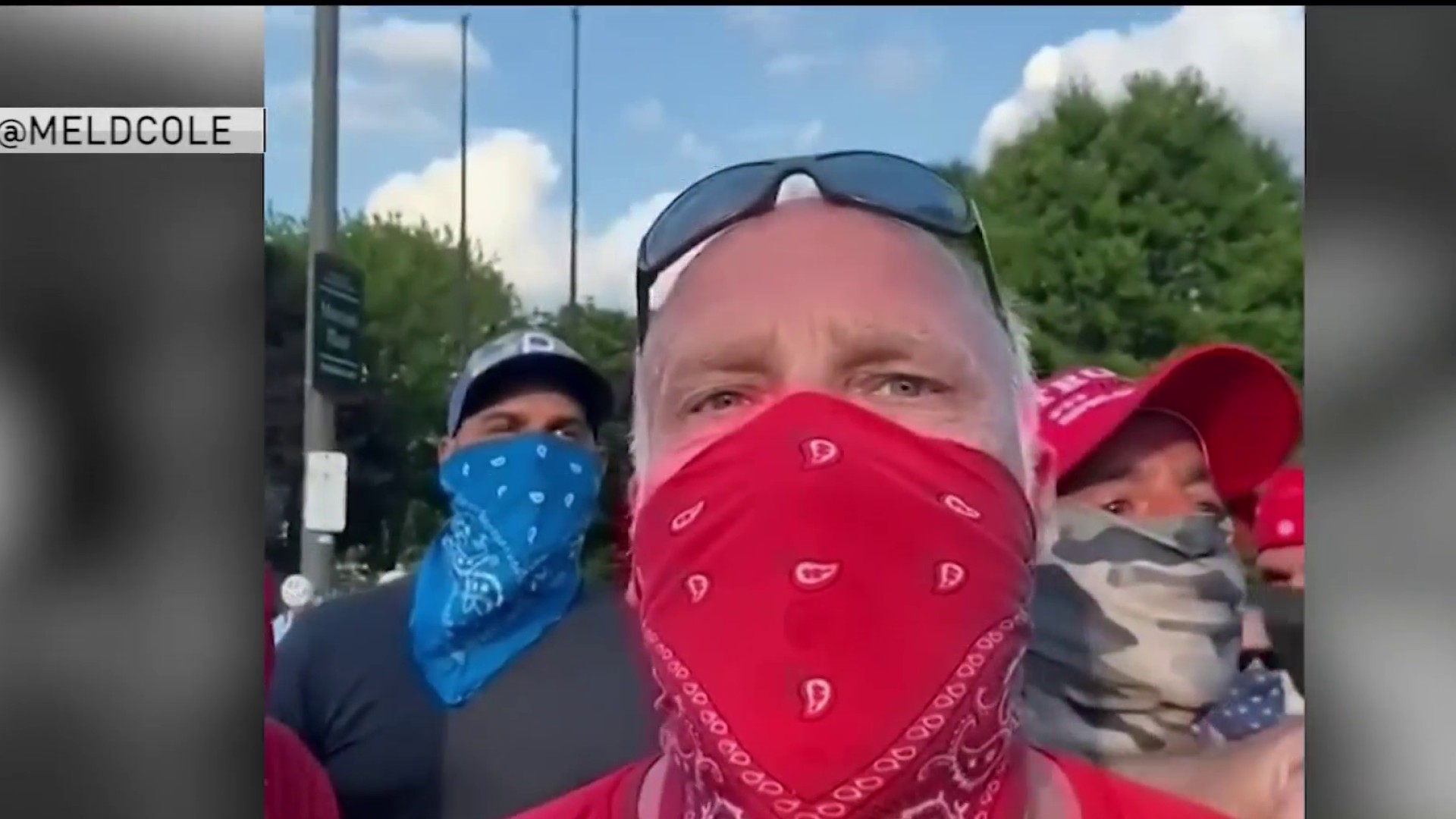A prominent Christopher Columbus statue in South Philadelphia that has been the site of clashes will be placed in temporary storage, with the city tasked with finding it another home on private property.
The decision by the Philadelphia Art Commission will see city officials place the statue in storage and report back every six months to the commission about efforts to find the statue, currently at Marconi Plaza, another home. As officials look for a new placement for Columbus’ likeness, they should consult with members of the community, the commission recommended.
Eight commissioners voted in favor of the proposal, with only commissioner Joe Laragione abstaining.
The art commission’s decision continues the saga of the statue, despite a vote last month by the city’s historical commission to remove it and the stance of Mayor Jim Kenney’s administration, which had argued that the monument was “unacceptable” and “unsafe” and should be relocated.
“It is clear from the last several weeks and months that maintaining the Columbus statue at Marconi Plaza is unacceptable to the majority of residents of Philadelphia and, in fact, completely unsafe,” said James Engler, Kenney’s chief of staff, at a similar meeting on the issue in July.
Shortly after Wednesday's art commission vote, a judge ruled that removing the statue should be temporarily halted. A spokesperson for Kenney's administration said the city's law department was reviewing the order but that "this should not change our plans as we were still in the process of ensuring the conditions set forth by the Historical and Art Commissions were met."
The statue became a cultural flashpoint when a group of mostly men, some armed with bats and at least one with a rifle, surrounded the sculpture on June 13th. The group was responding to unfounded social media rumors that the city planned to take down the statue as people in other cities tore down similar sculptures as the nation once again faced a racial reckoning.
Some of the men clashed with counter-protesters, and the city later covered the statue with a wooden box. Since then, at least one police officer has kept guard near Columbus’ likeness “24/7” in order to prevent further clashes, Public Art Director Margot Berg said in July’s meeting.
Debate about Columbus’ likeness followed widespread protests against racism and police violence after the death of George Floyd, a man who died handcuffed and on the ground after a Minneapolis police officer knelt on his neck for nearly 9 minutes, suffocating him.
The protests led to the toppling of Columbus statues and of Confederate monuments around the country as people sought to destroy vestiges of racism.
Though Columbus remains a point of pride for many Italian-Americans, including some in Philadelphia, he has become a controversial figure as people have pointed to his brutality against indigenous people in the Americas as reason for why he should not be revered.
The commissioners seemed to grapple with that issue, as well, noting that the legacies of other historical figures have also been reexamined and reinterpreted and that Columbus splits opinion even within the Italian community.
“We’re finding out every day that heroes are imperfect, and why should that surprise anybody? Heroes are always imperfect,” commission Chairman Alan Greenberger said.
Commissioner Natalie Nixon said she was mindful of the perceived “erasure” of Italian-American history that removing the monument might represent to some, but said she favored putting it in temporary storage and finding it another home because recent social justice movements have made the statue a subject to “all types of revisionist history about the man Christopher Columbus, not the icon Christopher Columbus.”
“I think there are opportunities to identify other placement of the statue, where it’s not a total erasure, where it’s in a place where people who feel an affinity for what Christopher Columbus meant to them, they can access the art in that new context,” Nixon said.
The staunchest opponents to the statue’s removal were Laragione and commissioner Raed Nasser, who noted its symbolic significance to Italian-Americans, who themselves faced struggles and discrimination upon first arriving in the United States.
Laragione argued in favor of keeping the monument at Marconi Plaza and having it guarded before its future again came to a vote in front of the commission at a later date, but that proposal that was rejected.
Notably, he claimed that the push to remove the statue was part of a “Marxist” movement to erase American history.
“It’s a Marxist movement to destroy as much culture and history in America as can possibly happen,” Laragione said.
The claim that removing statues is part of a Marxist movement is an unfounded accusation increasingly leveled against Black Lives Matter protesters. No other commissioner challenged him on his assertion.
On the other end of the spectrum was commissioner Robert Roesch, himself a sculptor.
“When I see a work of art being spray painted and people standing around it with guns and bats, I find that very upsetting, and that’s not the purpose of public art,” he said. “And to suggest the community could guard the artwork is patently absurd; unrest leads to more unrest,” he added while advocating for the statue’s relocation.
Officials from Kenney’s administration noted in July that most of the 13,000 people who responded to a survey about what to do with the monument favored its removal.
Commissioner Carmen Febo San Miguel argued that the city’s survey was “very rushed” and that officials should consider a “more well-thought out” survey to gauge public sentiment.



